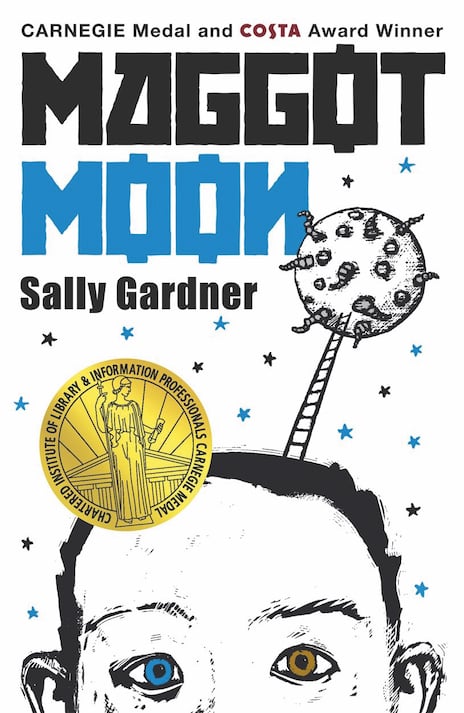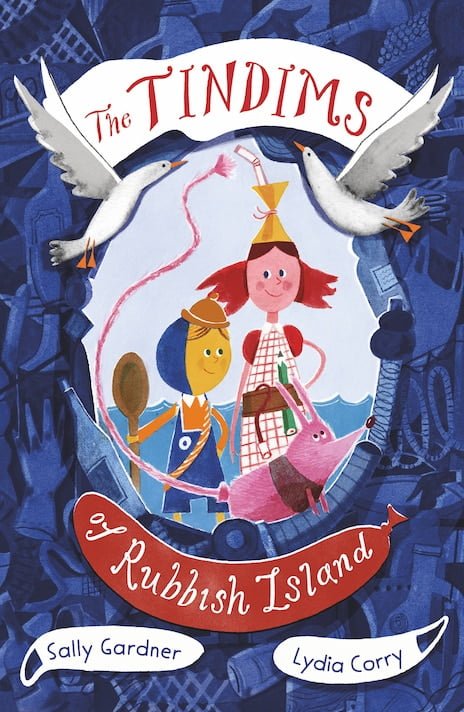Author Sally Gardner has won multiple awards and sold over two million books in 22 languages – she also couldn’t read until she was 14. Now she wants to talk about how we treat the one in ten with dyslexia
Words Libby Norman
Sally Gardner is a Carnegie and Costa-prize winning author with an army of admiring readers. Yet it took her 14 years to finally decipher those mixed and muddled letters on the page and start reading. The first book she read (Wuthering Heights) set her off on a course to a rich creative and writing career, but her story didn’t start well.
In fact, Sally Gardner got asked to leave so many schools that she ended up at what was then known as a ‘school for maladjusted children’. She was considered unteachable and her parents didn’t see any other options. Here were two high-flying lawyers (her mother was among the first female judges in England) with a daughter who couldn’t even seem to make sense of the printed word. “I loved language. I loved books. I just couldn’t read them,” Gardner says.

Today, she can still recall the moment words on page made sense. She describes how she was in a Nissan hut with the other ‘maladjusted’ girls round her. It was chaos, several girls were visibly distressed and the rain was driving down on the roof, making noise levels unbearable. “I just didn’t want to be there,” she says. “Normally I could tell myself a story to get me out of anywhere I was at, but I couldn’t do it. The noise was too great. I remember looking down and seeing this book, The Complete Works of Emily Bronte. I picked it up and started Wuthering Heights.”
She’d tried Bronte before but – as with every other novel – given up because she couldn’t make sense of words, especially characters’ names, but this time something different happened. “I started reading it, word by word, with my finger on the words, and suddenly there was total quiet. It was snowing and I was walking with this man trying to find a room for the night. I knew what was happening and I was in the world.”
“There is an underlying difficulty with reading among lots of people, it just goes undiagnosed. Every book should be printed with a dyslexia-friendly font”
Being in the creative world never stopped from that point on. Gardner had been promised by her mother that if she managed five O levels she could go to art school. Despite all dire predictions from teachers, she did it and studied at Central Saint Martin’s. She graduated with a First, then became a theatre designer in Newcastle. She had achieved success, but still – in the background – she was different. “If anyone had asked me then to describe what dyslexia was, what it felt like, I’d have said ‘it’s an old tin can that follows me round’,” she says.
She recalls the moment she confessed her problem to a work colleague – he was baffled by paperwork she was sending him – and he told her she simply had to tell people. That was the moment she decided she had to take control – pick up that tin can and own it. Sally Gardner does, it must be said, have an extraordinarily vivid way of describing dyslexia. She is widely on record as comparing it to a Rubik’s Cube, saying: “It takes time to work out how to deal with it, but once you do, it can be the most wonderful gift”.
If Newcastle was her picking up the tin can moment, Sally Gardner found her Rubik’s Cube – her wonderful gift – the day that her contract for her first novel came back. She had written The Little Nut Tree from the perspective of an illustrator and when the contract arrived it described her as ‘author’. She says: “I just couldn’t believe it”.
Success built from this, with a critical moment when she was taken under the wing of the “wonderful” editor Judith Elliott. She says that when she told Judith she has terrible dyslexia the editor shot back: ‘You’re a writer, what does that matter’. It was Judith who encouraged her writing talent, but the feeling she wasn’t a proper writer didn’t entirely go away. When people discovered she was a writer with dyslexia they would even question how this could be. “I used to be asked: ‘So how do you write?’. I’d tell them I wrote on a laptop. They would respond: ‘So, you have a ghost writer then?’ Only after Maggot Moon did all of it stop and everyone talked instead about my writing.”

They certainly did talk about the writing. This wasn’t Gardner’s first major gong, but for Maggot Moon she was awarded both the Carnegie Medal and Costa Prize – and for a book Gardner had started and then stuck in a drawer. She remembers where she was when she heard about the Carnegie. “I was on a Number 73 bus near the British Museum. I started crying and this little old lady got out a hankie and said: ‘I do hope it’s not bad news dear’. I was sworn to secrecy so didn’t know what to say to her and I was so embarrassed I had to get off the bus!”
In bringing Maggot Moon to life, she was lucky enough to meet Sarah Odedina, then setting up Hot Key Books, and when she said she wanted to buy it the author bravely refused her offer, saying she could decide once the book was finished. This was because she didn’t want a sequel, but a proper ending – even though everybody told her it was the ultimate no-no to kill off heroes in children’s books.

Librarians, judges and many readers loved it, although the praise wasn’t universal. “It’s a book that divides people and I think that’s absolutely as it should be,” she says. Gardner had done something else important with Maggot Moon – along with the short chapters, the dystopian feel and the very grown-up ending, it had a version with a dyslexia-friendly font. This outsold the standard font book – and Gardner recalls how many people told her the book was really easy to read.
“I think there is an underlying difficulty with reading among lots of people, it just goes undiagnosed, unsung, unnoticed, so I am on a crusade to get every book printed with a dyslexia-friendly font. I think it should be the main font. It’s much easier to read. It’s calmer on the eye, and for a lot of people reading would be easier,” says Gardner.
In her role as Ambassador for the British Dyslexia Association, Sally Gardner intends to be active on a whole range of issues to do with the rights of readers, and the way the 90 per cent treat the other ten per cent. Gardner would like us to stop talking about dyslexia as a disability and start to see what dyslexia can be – how people with dyslexia can be creative highly visual and solve problems ‘left brainers’ struggle with. “What we are great at doing is thinking out of the box. People with dyslexia navigate the world differently because they are forced to. A brick wall is never a brick wall, it’s just: how do I get through that brick wall?”
“Dyslexia does not stay still – it’s not a quiet, one-pitch thing. Get me into a panic and I can barely say my name”
She talks to many readers and reluctant readers – she has visited prisons and talked to people there. She remains concerned about the number of inmates who can’t read. Sally Gardner knows there is more to be done. “We have written off too many children,” she says. “I’m standing up for a lot of little people who are still struggling.” One thing she would like is for all children to be tested for dyslexia at age 7, and again at age 11. She says: “Dyslexia does not stay still – it’s not a quiet, one-pitch thing. Get me into a panic and I can barely say my name, even now.”
Her relationship with reading is still “complicated” and she often prefers to listen to audio books. But when it comes to writing, she has a gift for creating text that entices in even the most reluctant readers. “I think I’m good at writing for little people because I can see what is complicated in language,” she says. Her latest book The Tindims of Rubbish Island is a charming and timeless tale about a Borrowers-like group that turn our ocean flotsam and jetsam into treasure. It is a joint project with her illustrator daughter Lydia Corry and was inspired by their walks along the Sussex coast, where they both now live. As ever, it has an immensely readable style and an easy-to-read font designed to tempt in all young readers.
Her advice to parents of children who are reluctant readers or have dyslexia is to be patient and to get them into listening books. “I’ve done most of my reading through my ears. I think I still do,” she says. Her other advice is not to raise hell over tidying messy bedrooms. Almost Tindim-like, Sally Gardner says she was a child who had a perpetual struggle seeing the chaos around her – however upset her mother got. “Still, if I get things in a real muddle I can’t visually see it. I need someone calm to help me organise!” she adds.

To find out more about Sally Gardner, visit sallygardner.co.uk. Find out more about the work of the British Dyslexia Association at bdadyslexia.org.uk
Further reading: Retained reflexes and dyslexia
You may also like...






























